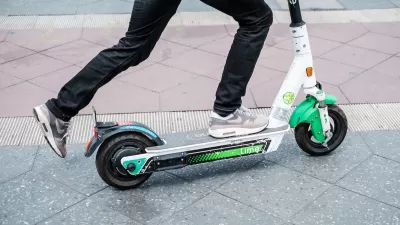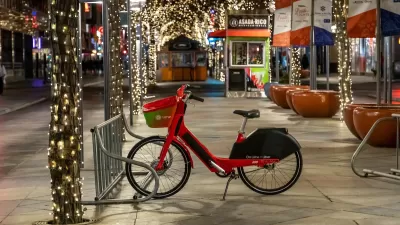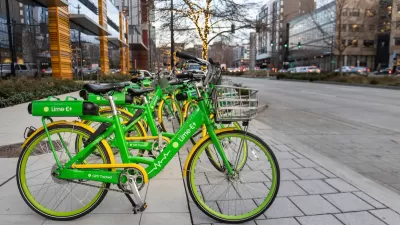Ridership on shared bike and scooter fleets showed numbers higher than before the pandemic in the second part of 2021, according to a new report.

Ridership on shared mobility devices like scooters and bikes is starting to reach pre-pandemic levels, according to the North American Bikeshare & Scootershare Association’s 2021 Shared Micromobility State of the Industry Report. As Charles Pekow reports in Smart Cities Dive, “North Americans took an estimated 128 million trips on shared mobility vehicles in 2021 — 53% more than in 2020, but 18% lower than in 2019, the report stated.”
The pandemic likely introduced more people to micromobility, says NABSA Exeutive Director Samantha Herr. “Many more people tried it during the pandemic … As horrible as the pandemic has been, it really did highlight the importance of shared micromobility.”
The report also includes statistics about device fleets, highlighting the growth of e-scooter deployment, which increased by 57 percent during 2021. More providers also implemented reduced fare programs, but only 21 percent have started offering adaptive devices for people with mobility challenges. The report also notes that “Men and those between the ages of 25 and 44 were overrepresented as a share of the population that use shared micromobility.”
FULL STORY: E-bike, e-scooter use recovering after pandemic decline, NABSA shared micromobility report finds

Planetizen Federal Action Tracker
A weekly monitor of how Trump’s orders and actions are impacting planners and planning in America.

Restaurant Patios Were a Pandemic Win — Why Were They so Hard to Keep?
Social distancing requirements and changes in travel patterns prompted cities to pilot new uses for street and sidewalk space. Then it got complicated.

Maui's Vacation Rental Debate Turns Ugly
Verbal attacks, misinformation campaigns and fistfights plague a high-stakes debate to convert thousands of vacation rentals into long-term housing.

In California Battle of Housing vs. Environment, Housing Just Won
A new state law significantly limits the power of CEQA, an environmental review law that served as a powerful tool for blocking new development.

Boulder Eliminates Parking Minimums Citywide
Officials estimate the cost of building a single underground parking space at up to $100,000.

Orange County, Florida Adopts Largest US “Sprawl Repair” Code
The ‘Orange Code’ seeks to rectify decades of sprawl-inducing, car-oriented development.
Urban Design for Planners 1: Software Tools
This six-course series explores essential urban design concepts using open source software and equips planners with the tools they need to participate fully in the urban design process.
Planning for Universal Design
Learn the tools for implementing Universal Design in planning regulations.
Heyer Gruel & Associates PA
JM Goldson LLC
Custer County Colorado
City of Camden Redevelopment Agency
City of Astoria
Transportation Research & Education Center (TREC) at Portland State University
Camden Redevelopment Agency
City of Claremont
Municipality of Princeton (NJ)





























